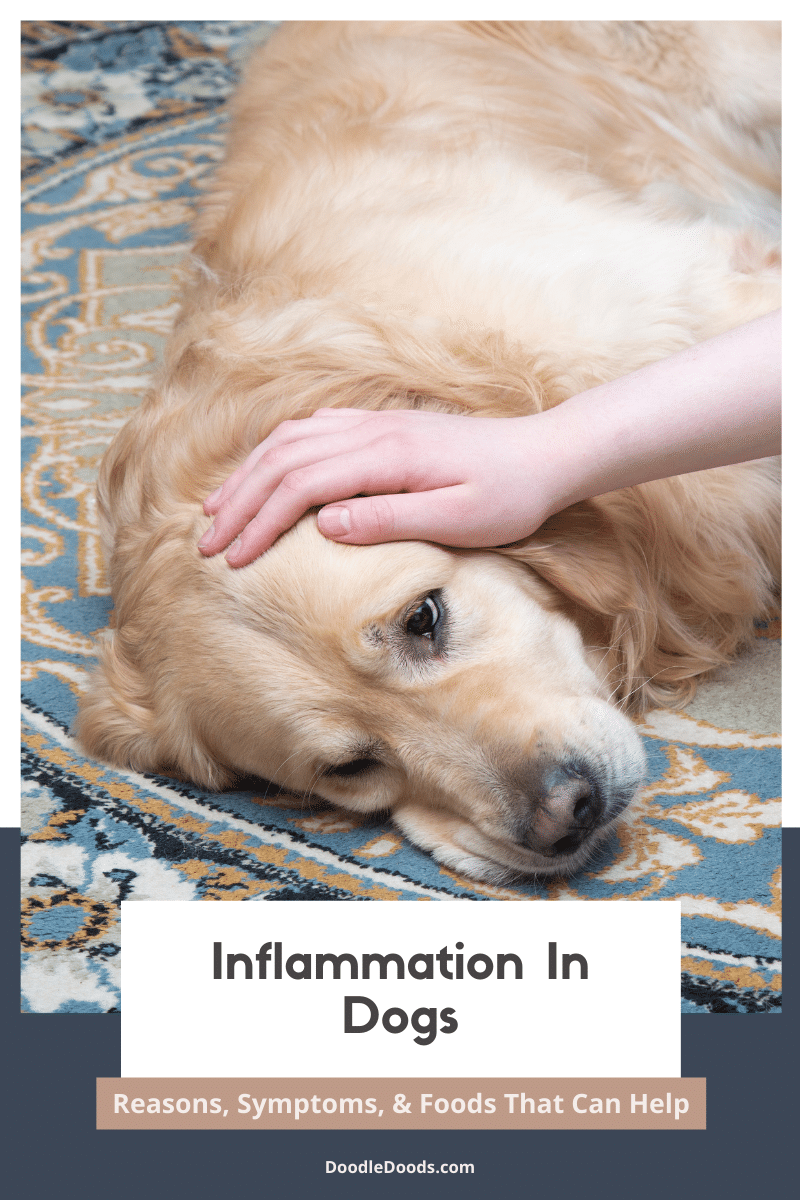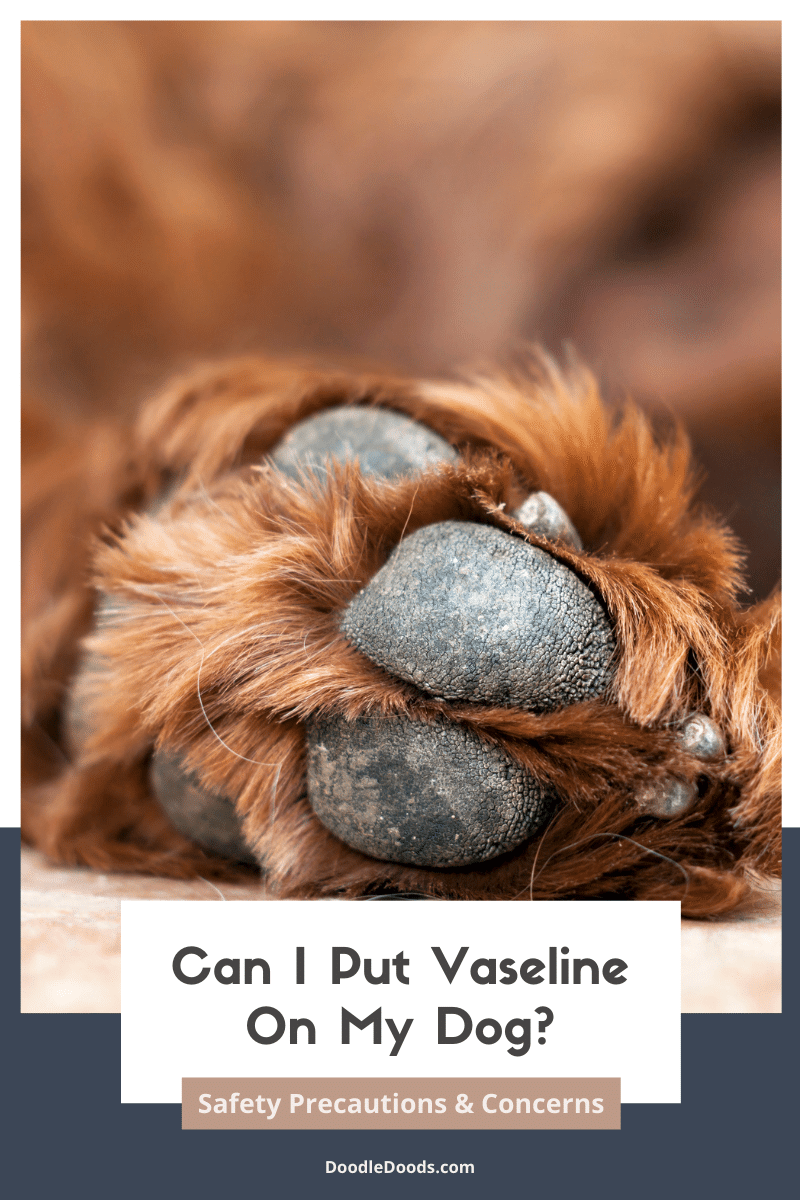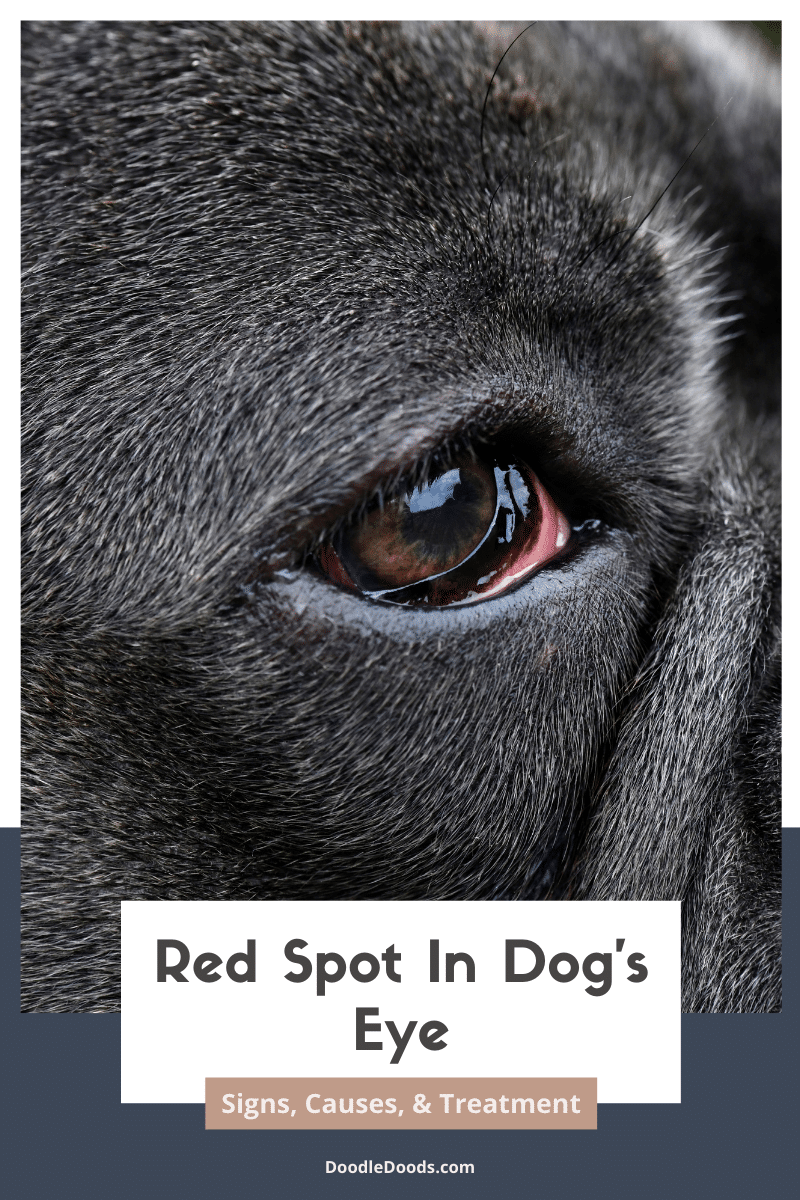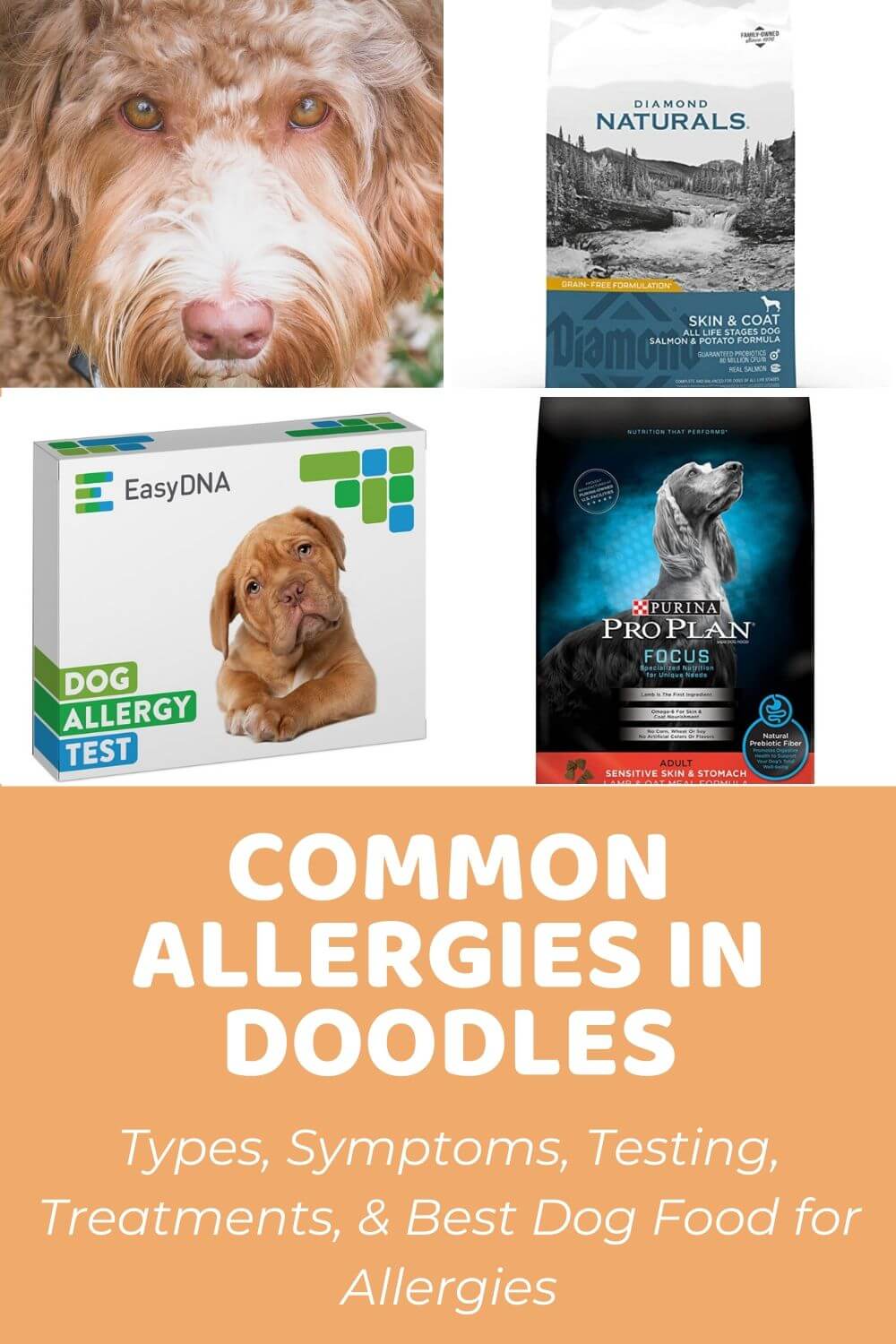As a responsible pet owner, you’ll want to ensure your dog enjoys a long, happy, and healthy life. That’s why educating yourself on some of the more common canine issues, like inflammation, is a good idea. Much like people, dogs can suffer from this debilitating condition that can be caused by any number of things. Not only is inflammation in dogs a problem in its own right, but it ups the risk factor for a variety of other conditions too.
Happily, there are things you can do to prevent this otherwise useful physiological response from becoming a chronic issue and impacting your pup’s long-term health and well-being. One of the most effective is tailoring their diet. Food can both play a role in causing inflammation (especially because of the Poodle’s dietary sensitivities), but surprisingly also in reducing it. Want to know more? Just keep reading:
Table of Contents
- Inflammation in Dogs: What Is It And Why Does It Happen?
- Symptoms of Inflammation In Your Dog
- Top 10 Anti-Inflammatory Foods For Dogs
- Creating an Anti-Inflammatory Diet For Your Dog
- Frequently Asked Questions About Inflammation in Dogs
- Final Thoughts
Inflammation in Dogs: What Is It And Why Does It Happen?
Triggered by the immune system, inflammation is a vital way your dog’s body protects and heals itself. When there is tissue damage or the body senses the presence of any foreign object or organism (bacteria, viruses, fungus, etc.), it dilutes the blood vessels and sends the body’s best defense – white blood cells – to the area in question. As a result of this increased blood flow and the presence of chemicals that cause fluid leakage to the surrounding tissue, swelling ensues, leading to pain and stiffness.
While inflammation is a crucial immune response, it’s also one that can sometimes get a little out of control. In certain situations, the body can set off an immune response even when there are no invaders to fight off. This can create an endless loop whereby one inflammatory response follows another without any recovery time in between. Not only will this kind of “chronic inflammation” be uncomfortable for your pet, but it increases their risk of developing long-term disorders like diabetes, cardiac disease, and more.
Symptoms of Inflammation In Your Dog
The truth is, just about every part of your pup can suffer the effects of inflammation – their skin, joints, organs, internal tissue… If you’re dealing with any problem that ends in an -itis (dermatitis – skin, colitis – colon, otitis – ear, or arthritis – joints), then you know this is an issue of either acute or chronic swelling.

No matter where it occurs in the body, the process is a similar one, but the symptoms, especially the easily visible ones, will naturally vary. You may notice redness if the problem is close to the skin’s surface, heat, or swelling. You might even be able to clearly see the injury or infection site that triggered the issue. Treating these will help with reducing the inflammation that much faster.
With more internal swelling, however, you’ll need to look for perhaps subtler signs of pain or impaired function. If your pal is suddenly growling at you when you go to touch them, or they are spending much of their time licking or biting at certain areas of their body, then you can likely deduce that these parts are hurting them. With older dogs, you might notice them limping or having difficulty standing or jumping up. This can indicate swelling in their joints that is making them stiff and uncomfortable.
Top 10 Anti-Inflammatory Foods For Dogs
If you suspect your pet might be suffering from inflammation and there is no obvious cause that you can quickly and easily do something about (slight skin injury or ear infection, for instance), then it’s best you take them to the vet. In some cases, it might be that something in their environment is triggering an unwanted physiological response – as is the case with allergies and especially with food intolerances. Stress and anxiety can also be contributing factors to chronic inflammation – but they are harder to detect.
Either way, you’re going to want to start doing something about your pooch’s symptoms just as soon as you can. Not only because it can severely impact their quality of life but because of how it can lead on to more serious problems. Some vets might prescribe Non-Steroidal Anti-Inflammatory for Dogs (NSAIDs) to treat more serious inflammation, but you’ll want to try and avoid this if you can. These can have some pretty nasty side effects. If it’s possible for you to go a more natural way, then you definitely should.
The following foods, when supplemented into your pup’s diet of top-quality kibble, can make a big difference:
Turmeric
This relatively common yellow fragrant spice has been used as a natural anti-inflammatory for generations. Related to ginger (another powerful cure-all), turmeric’s main active compound is curcumin (this is actually what gives it its color). And it’s this that especially helps with easing swelling-related pain and mobility issues in older and sick dogs. Simply add a quarter of a spoonful to a bit of oil (such as coconut, olive, or linseed), and mix in a little pepper for taste before adding it to your pal’s food.
Blueberries
Most people wouldn’t see the value of adding fruit to their dog’s diet, but it can actually be incredibly beneficial in a variety of ways. Take blueberries, for instance (and raspberries, cranberries, and strawberries, too). These all are rich in anthocyanin and resveratrol, which are both powerful antioxidants with (yep, you’ve guessed it) potent anti-inflammatory properties, too. As berries are relatively low in sugar, they make excellent treat alternatives, especially frozen in the summertime, for an extra burst of freshness.
Alfalfa
Alfalfa is a popular feed stuff for many animals because of its numerous beneficial properties – and it can work wonders for your dog too. Not only is it rich in nutrients like calcium, magnesium, potassium, and vitamins, but with its anti-inflammatory properties, it can go a long way in relieving some of the more painful symptoms of canine arthritis. That’s why vets particularly recommend this diet supplement for senior dogs. The easiest way to add it to your pet’s diet is to simply mix a pinch or two directly into their dinner.
Fish
Although more popular with cats than dogs, fish can be an excellent alternative meat source for your Dood. Not only is it rich in omega 3s which are widely known for their ability to prevent low-grade chronic inflammation, but fish is a great source of lean protein, which makes it perfect for pups who could stand to lose a few pounds. These days there are tons of wonderful kibble options that feature fish as their top ingredient. Pet parents seem to particularly love Victor’s Select Ocean Fish Formula Dry Dog Food.
Orange Vegetables
Dogs lean more towards being omnivores rather than strict carnivores, so eating vegetables is advantageous for them. While not quite as vital to our canine friends as to us, the various vitamins support better health. That’s why many of the best kibbles contain these as standard. If you’re looking for one specifically for inflammation, check out anything containing carrots, butternut squash, or sweet potatoes. Rich in anti-inflammatory beta-carotene, they support the immune system in numerous ways.
Beets
Speaking of brightly colored vegetables… the vibrant beet is another strong contender for most beneficial no-protein for dogs. Loaded with fiber, vitamins, and minerals, including vitamin C, potassium, folate, and magnesium, these veggies look pretty great even before factoring in their anti-inflammatory properties, which come from the betalain pigments in the skin. As with most vegetables, beets work best in their raw, organic form. Just be aware that they contain a little more sugar than you would think, so moderation is good.
Nuts and Seeds
Almonds, pistachios, and pecans, plus sunflower, sesame, chia, and pumpkin seeds, all offer anti-inflammatory benefits due to their high vitamin E and selenium content. The former, a powerful and essential antioxidant, helps to keep the immune system in tip-top shape, while the latter helps lower oxidative stress, which in turn reduces inflammation. Brazil nuts are the richest source of these. However, they also contain the most fat. You’ll want to be cautious about how much you give to your small or slightly overweight hound.
Tomatoes
The humble tomato has largely been misunderstood in terms of whether it eases or causes inflammation. A member of the nightshade family, it was thought to be a problem product because of the presence of alkaloids which, in large doses, can exacerbate inflammation. However, tomatoes also contain lycopene and vitamin C. These both have many health-boosting properties, including curbing inflammation and supporting the immune system. Feed your pet ripe tomatoes in moderation to see the best effects.
Coconut
While we’ve already mentioned coconut oil as a way to add turmeric to your dog’s diet, it can be an effective anti-inflammatory in its own right – as can coconut meat. In fact, the benefits of the latter might even outweigh those of the former as it’s particularly rich in lauric acid. This medium-chain fatty acid is excellent for fighting off viruses and various kinds of infections, including yeast infections and ringworm. Plus, it can also greatly reduce different types of swelling and help your pet’s coat to look soft and beautiful too.
Celery
If you’re looking for a low-calorie snack to help with inflammation while ensuring your pup keeps off those unhelpful pounds, you can’t go wrong with celery. The taste might not suit every pooch, but overall, celery is more of a miracle food than you might think. For a start, it’s rich in both antioxidants and fiber that actively work against obesity with amino acids, calcium, and vitamins that support joint health. Beyond that, it supports the body in eliminating uric acid out of the body which can make arthritis worse. A good one to try!
Creating an Anti-Inflammatory Diet For Your Dog
While certain types of food can be great at reducing inflammation in dogs, there are plenty around that could, in fact, be causing it. Allergies and intolerances are definitely one potential issue for Doodles, but certain other ingredients should always be avoided. Among the more well-known of these troublemakers, you’ll find processed meats such as sausage, ham, and bacon; hard cheeses; egg yolks; refined grains like white flour and white rice; and polyunsaturated vegetable oils, which include sunflower, corn oil, and soybean oil.
That’s not to say that your dog shouldn’t have any of these, only that they should be an occasional treat rather than an everyday staple. Although if your hound is on the larger side, then you’ll want to stay well clear. Keeping your pet at a healthy weight is vital for warding off unwanted inflammation. Fat tissues tend to contain and higher proportion of the immune cells that produce this response. So the more fat, the more inflammation. This means that it’s not simply about what your pup eats but how much of it too.
Aside from avoiding the usual suspects, you’ll want your dog’s anti-inflammatory diet to consist mainly of all-natural foods. This is because highly processed ones interact differently with your dog’s body. As well as altering the healthy gut bacteria, they tend to trigger the immune response due to the presence of certain ingredients that the body doesn’t like or that it no longer recognizes as even being food. The end result is inflammation, as well as a range of other potential digestive issues and worse.
Keep in mind that a good dog food requires a strong protein base. Opt for organic, pasture-raised meats, turkey, and chicken whenever possible so as to avoid the presence of toxins that may trigger the body. Lean proteins will help with keeping the weight off. Aim to avoid kibble with too many filler carbohydrates – especially if they are on our above list of processed ingredients. Instead, try to find one that contain some of the foods from our anti-inflammatory list if you can, and supplement others in as needed.
Frequently Asked Questions About Inflammation in Dogs
Inflammation has certain identifying characteristics that may be more or less visible in your pet, depending on exactly where the inflammation is. These include redness, heat, swelling, pain, and loss of function. So, for instance, you may notice that your pup’s skin is red and emitting heat with issues here, their joints might be noticeably swollen, or your hound might be limping if this is the problem. Internal swelling is much trickier to spot.
Depending on the cause of the inflammation, treatment options may vary. In the case of acute inflammation due to illness or injury, treating this will help significantly with the inflammation. If you suspect chronic inflammation, on the other hand, the best thing to do is to take your pal for a check-up at the vet’s, and they will be able to advise you on what might be causing the inflammation and the best ways to support your pet at this time.
There are numerous beneficial foods that can help with both reducing inflammation and its various symptoms. Many of these are fruits and vegetables. The particularly colorful ones tend to be the best, as they are usually antioxidants and have the best anti-inflammatory properties. For joint issues linked to inflammation, such as arthritis, look to oils, nuts, and seeds, especially ones rich in fatty acids, to ease pain and stiffness.
While medication may be the best way to go for severe inflammation in dogs, a lot of these can have some pretty unpleasant side effects. That’s why it’s good to have an understanding of the role of food in inflammation and the various ingredients that can fight against it – they are more potent than you might think! In fact, diet is the best way. Manufactured supplements may seem helpful, but these can often do more harm than good.
Acute inflammation dogs linked to illness or an injury will generally be at its worst (and most painful) in the first three days and then will gradually begin to subside from there. Depending on the severity of the problem, it can last weeks. Chronic inflammation, however, will either be ongoing well beyond this or will occur in cycles whereby the response is triggered repeatedly (depending on what is causing the issue, of course).
Final Thoughts
Inflammation in dogs is a concerning issue when it comes to your pet, but often it’s highly treatable – or at least you can work towards reducing the problem. One of the best ways to do this is through your pet’s diet. By switching them over from more processed to less processed ingredients, you can avoid triggering chronic inflammation, which has some pretty serious consequences on your pet’s health in the long term. Then by adding in some of the foodstuffs on this list, you can work towards making the overall situation better. Just be mindful that it’s always a good idea to chat with your vet before making any substantial changes to your pet’s diet.
Want to Learn
DIY Doodle Grooming?

 “Every concern and question I had now has clear, practical solutions.” – Paula D.
“Every concern and question I had now has clear, practical solutions.” – Paula D.
 “These lessons have provided tremendous amounts of information.” – Steve B.
“These lessons have provided tremendous amounts of information.” – Steve B.
 “Buy the course and complain about how easy it is!” – Chris S.
“Buy the course and complain about how easy it is!” – Chris S.
Learn How To Groom Your Doodle At Home…
Safely…And Without Confusion:









